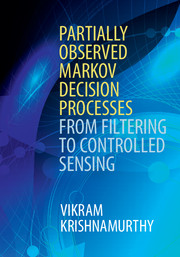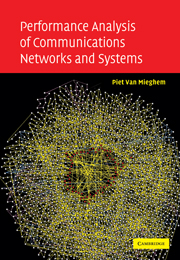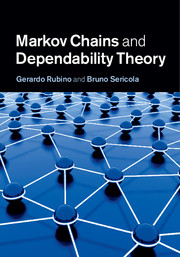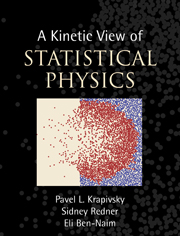A Guide to First-Passage Processes
- Author: Sidney Redner, Boston University
- Date Published: June 2007
- availability: Available
- format: Paperback
- isbn: 9780521036917
Paperback
Other available formats:
Hardback
Looking for an inspection copy?
This title is not currently available for inspection. However, if you are interested in the title for your course we can consider offering an inspection copy. To register your interest please contact [email protected] providing details of the course you are teaching.
-
First-passage properties underlie a wide range of stochastic processes, such as diffusion-limited growth, neuron firing and the triggering of stock options. This book provides a unified presentation of first-passage processes, which highlights its interrelations with electrostatics and the resulting powerful consequences. The author begins with a presentation of fundamental theory including the connection between the occupation and first-passage probabilities of a random walk, and the connection to electrostatics and current flows in resistor networks. The consequences of this theory are then developed for simple, illustrative geometries including the finite and semi-infinite intervals, fractal networks, spherical geometries and the wedge. Various applications are presented including neuron dynamics, self-organized criticality, diffusion-limited aggregation, the dynamics of spin systems and the kinetics of diffusion-controlled reactions. First-passage processes provide an appealing way for graduate students and researchers in physics, chemistry, theoretical biology, electrical engineering, chemical engineering, operations research and finance to understand all of these systems.
Read more- Highlights first-passage processes; most books on probability theory and stochastic processes treat it as a subsidiary
- The emphasis is on physical intuition and how to solve problems rather than on theory
- A range of applications are presented as being part of first-passage processes
Reviews & endorsements
'… this is unquestionably a valuable book, written at an accessible level for graduate students while providing a nice summary of the last century's - and notably the last two decades' - developments of these methods. I do not doubt that this will be a popular book; it fills a hole in the textbook/monograph literature that's needed filling for at least ten years. Moreover, the author's style is relaxed and crystal clear while maintaining mathematical precision and power.' Charles Doering, University of Michigan
See more reviews'… to practitioners in the field of first-passage problems and to students entering the field … I can recommend it strongly … It is clearly written and the organisation and presentation of the material are excellent. It serves as a useful repository of standard and not-so-standard techniques which anyone working in the area of stochastic processes in general, and first-passage problems in particular, will want to have on their shelves.' Alan J. Bray, The Journal of Statistical Physics
'I found the author's style accessible and interesting.' Contemporary Physics
Customer reviews
Not yet reviewed
Be the first to review
Review was not posted due to profanity
×Product details
- Date Published: June 2007
- format: Paperback
- isbn: 9780521036917
- length: 328 pages
- dimensions: 229 x 152 x 19 mm
- weight: 0.48kg
- contains: 91 b/w illus.
- availability: Available
Table of Contents
Preface
Errata
1. First-passage fundamentals
2. First passage in an interval
3. Semi-infinite system
4. Illustrations of first passage in simple geometries
5. Fractal and nonfractal networks
6. Systems with spherical symmetry
7. Wedge domains
8. Applications to simple reactions
References
Index.-
General Resources
Find resources associated with this title
Type Name Unlocked * Format Size Showing of
This title is supported by one or more locked resources. Access to locked resources is granted exclusively by Cambridge University Press to lecturers whose faculty status has been verified. To gain access to locked resources, lecturers should sign in to or register for a Cambridge user account.
Please use locked resources responsibly and exercise your professional discretion when choosing how you share these materials with your students. Other lecturers may wish to use locked resources for assessment purposes and their usefulness is undermined when the source files (for example, solution manuals or test banks) are shared online or via social networks.
Supplementary resources are subject to copyright. Lecturers are permitted to view, print or download these resources for use in their teaching, but may not change them or use them for commercial gain.
If you are having problems accessing these resources please contact [email protected].
Sorry, this resource is locked
Please register or sign in to request access. If you are having problems accessing these resources please email [email protected]
Register Sign in» Proceed
You are now leaving the Cambridge University Press website. Your eBook purchase and download will be completed by our partner www.ebooks.com. Please see the permission section of the www.ebooks.com catalogue page for details of the print & copy limits on our eBooks.
Continue ×Are you sure you want to delete your account?
This cannot be undone.
Thank you for your feedback which will help us improve our service.
If you requested a response, we will make sure to get back to you shortly.
×






